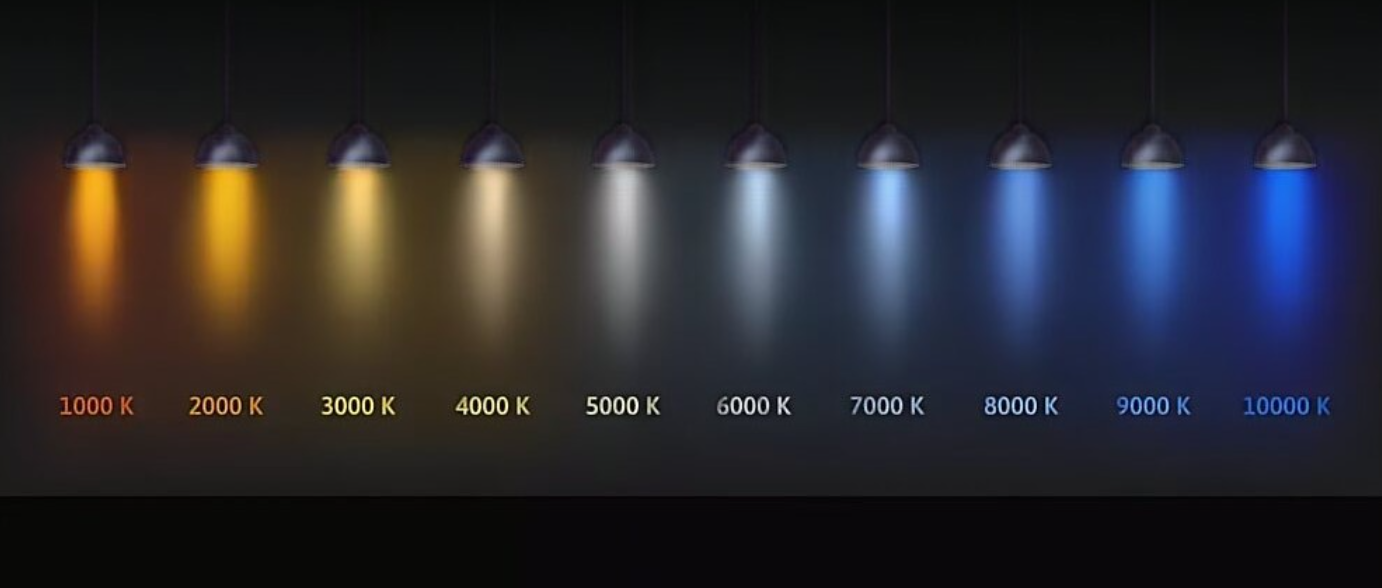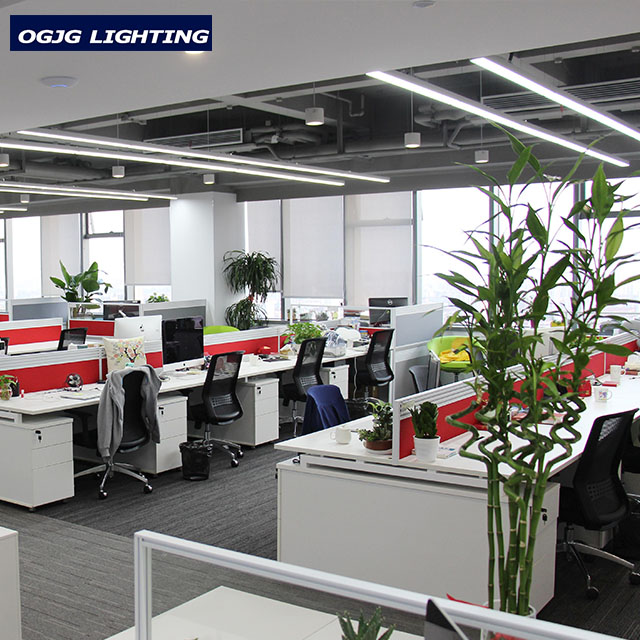Imagine you're settling into your office on Monday morning. As you start your computer, the glaring overhead light begins to strain your eyes, casting an unnaturally bright glow across your workspace. By lunchtime, the headache starts. Could the culprit be the very lights you thought would make your office bright and energetic?
For many office environments, lighting that mimics daylight, around 5000K, is considered ideal for tasks requiring sharpness and clarity. However, this level of brightness might not suit everyone, especially in smaller or more reflective spaces where excessive brightness can cause glare and eye strain. Adjusting the color temperature to a slightly warmer 4000K can reduce these issues, providing a comfortable balance between brightness and eye comfort.
Understanding the nuances of color temperature and its effects on workplace productivity is crucial. Let’s dive deeper into why certain lighting conditions work better and how you can optimize your office’s lighting for maximum comfort and efficiency.
What is Color Temperature?

Color temperature, measured in degrees Kelvin (K), is an essential metric used to describe the appearance of light emitted by different light sources. This scale categorizes light from warm, with lower Kelvin values exhibiting a yellowish hue, to cool, where higher values produce a bluish tone. Understanding and utilizing this scale allows designers and facility managers to tailor the lighting in a workspace not only to suit the specific functional requirements of different tasks but also to enhance the overall aesthetic and mood of the environment. Proper application of color temperature can transform an ordinary office into a productive and visually comfortable workspace, aligning the physical setting with the occupational needs and preferences of its users.
What Color of Light Does Each Color Temperature Represent?

Color temperatures on the Kelvin scale help determine the ambiance and functionality of various spaces, influenced by the color characteristics of the light emitted. At the lower end of the spectrum, color temperatures ranging from 2000K to 3000K produce a warm, yellowish glow. This soft, warm light is reminiscent of candlelight or the golden hues just after sunrise or before sunset, making it particularly well-suited for relaxing environments such as living rooms, dining areas, or hospitality settings like restaurants and boutique hotels, where a cozy, welcoming atmosphere is desired.
In the middle range, color temperatures from 3100K to 4500K emit a brighter, more neutral white light. This clean white light strikes a balance between warm and cool, making it versatile for a wide range of applications. It's ideal for general task lighting in homes, offices, and retail spaces, where it provides sufficient illumination for everyday activities without the harshness that cooler temperatures might bring.
At the higher end, color temperatures between 4600K and 6500K mimic natural daylight. This intense, blue-white light is energizing and is best used in environments where high levels of concentration and attention to detail are necessary. Ideal for places like laboratories, assembly areas, and design studios, it helps enhance visual clarity and reduce eye strain, facilitating tasks that require precision and meticulous focus. This daylight-like quality is also beneficial in educational settings, where it can help maintain alertness and improve overall cognitive functions among students and staff.
What Color Temperature is Best for Office?
In office environments, the selection of appropriate lighting is crucial for both functionality and comfort. Among the various options, a 4000K color temperature is frequently recommended due to its balanced properties, which provide numerous benefits for a wide range of office tasks. This neutral, pleasant light sits comfortably between the warm and cool ends of the spectrum, making it an excellent all-around choice for diverse office settings.

The advantage of 4000K:
Optimal Visibility and Reduced Glare: One of the primary advantages of 4000K lighting is its ability to deliver clear, bright light without the harshness associated with higher Kelvin temperatures. This reduces glare, which is a common complaint in offices that can lead to eye strain and headaches, particularly when employees are working on computer screens for extended periods. The softer quality of 4000K light helps maintain visual comfort, which is essential for productivity and maintaining a focused workforce.
Enhances Focus and Alertness: While softer than the bluish tint of higher temperatures, 4000K light is still sufficiently bright to promote alertness and cognitive clarity. Its neutral tone provides an excellent backdrop for tasks that require mental concentration, such as reading, writing, and data analysis. The light mimics midday conditions, which are naturally conducive to alertness and can help regulate circadian rhythms, thus reducing the experience of afternoon fatigue that can affect employee performance.
Color Accuracy and Aesthetic Appeal: 4000K light strikes a balance in color rendering, which is the light's ability to reveal the colors of various objects faithfully in comparison to natural light. This is particularly important in professions where color discrimination is key, such as graphic design, printing, and art. The neutral white light enhances the vibrancy of colors without distorting them, which can be a critical factor in decision-making processes that depend on accurate color judgment.
Versatility Across Office Zones: Due to its balanced characteristics, 4000K lighting can be used effectively across different areas within an office. From workstations and meeting rooms to reception areas and break rooms, this color temperature can maintain a consistent, unobtrusive lighting standard that meets various functional needs. Whether employees are engaging in collaborative projects, individual tasks, or simply taking a break, 4000K lighting creates a conducive environment that supports a wide range of activities.
Energy Efficiency and Cost Effectiveness: Modern LED lighting solutions available at 4000K offer significant energy savings compared to traditional lighting options. LEDs are not only more energy-efficient but also have a longer lifespan, which reduces both replacement costs and maintenance labor. Offices switching to LED lighting at this color temperature can enjoy reduced utility bills and a lower environmental impact, contributing to a greener corporate footprint.
Enhanced Well-being and Productivity: Finally, the psychological and physiological effects of 4000K lighting cannot be understated. The right lighting can elevate mood, increase satisfaction, and boost overall well-being, leading to higher productivity levels. Studies have shown that proper lighting can decrease absenteeism and turnover, while improving the speed and accuracy of work.
By incorporating 4000K lighting into office designs, businesses can optimize their environments to support the health, comfort, and performance of their employees, making it a wise choice for those seeking to enhance workplace efficiency and employee satisfaction.
Does the Light Color Temperature Affect Mood and Productivity?
Research indicates that cooler light temperatures, ranging from 5000K to 6500K, can significantly impact workplace mood and productivity. These higher Kelvin values mimic the qualities of natural daylight, which is known to promote alertness and vitality. Exposure to such light, especially during the morning and midday, can help regulate circadian rhythms, enhancing an individual's focus and energy levels throughout the workday. This is particularly beneficial in settings where cognitive demand is high, as the naturalistic lighting conditions foster an environment conducive to mental clarity and concentration.
However, while the benefits of cooler light temperatures are well-documented, they are not without potential drawbacks. Lights that are too bright, such as those at the upper end of the cooler spectrum, can sometimes lead to visual discomfort and glare, particularly when used indiscriminately in office environments. Prolonged exposure to intense, cool light can strain the eyes, leading to symptoms like headaches, eye fatigue, and overall physical discomfort, which can detract from productivity rather than enhancing it.
The key, therefore, lies in achieving a balanced approach when implementing cooler lighting solutions. Tailoring light settings to the specific needs of an office space and its occupants is crucial. Factors such as the office’s natural light availability, the nature of the tasks performed, and the personal preferences of employees should all be considered. Utilizing adjustable lighting systems that allow employees to customize their light exposure according to their personal comfort and the time of day can help mitigate the negative effects of cooler light temperatures while maximizing their positive impacts. Employing diffusers or selecting fixtures with appropriate shielding can also reduce glare, making the light more comfortable to work under.
By thoughtfully integrating cooler light temperatures into workplace design, organizations can harness the advantages of simulated daylight to enhance mood and productivity while minimizing discomfort, thereby creating a more dynamic and supportive work environment.
Conclusion:
Choosing the right color temperature for office lighting is a critical decision that influences not just how we see but how well we work. While the clear, daylight-like illumination of 5000K lights has its place in specific office zones, the more balanced, softer light of 4000K is generally better suited for whole-office applications. By considering both employee comfort and the specific requirements of different tasks, businesses can create a more productive, healthier workplace.




 0750-3131535
0750-3131535

 +86 136 1226 8315
+86 136 1226 8315
